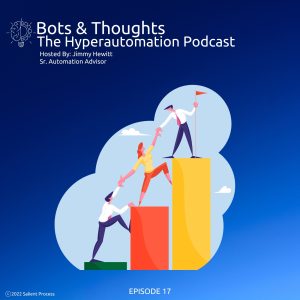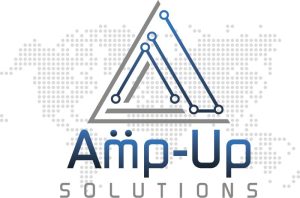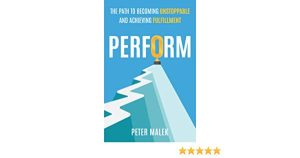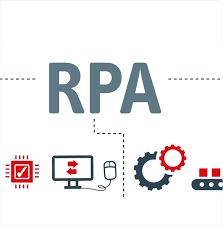
During Opex (World Annual Operational Excellence & Business Transformation Summit), Host Jimmy Hewitt had the amazing opportunity to sit down with THE Peter Malek, Author and Process & Technology Transformation Leader at Experian. Peter has over 18+ years of progressive achievement in organizational strategy, operational excellence, project/change management, product management and 10+ in leadership. He founded VMWare’s Process Discovery and RPA Practice, and he is now leading productivity at Experian! Tune in to hear his insight on Operational Excellence, Scaling Beyond RPA, and more!
Watch Episode 17 interview now!
Follow along with the episode now!
 Education:
Education:
Management Information Systems (MIS) degree
Double major in Decision Sciences Statistics
Masters in Systems Engineering
Specializations:
Executive Education
Organizational Change Management
Artificial Intelligence Strategy for AI (MIT)
Lean Six Sigma
Master Black Belt
Always focused on process improvement, personally and professionally


 Empowerment: Giving people the ability to make decisions and execute against them themselves
Empowerment: Giving people the ability to make decisions and execute against them themselves
Don’t hold people back by rules and layers of approval if they don’t have to be
Give people the room to learn or fail fast and quickly and try things until they figure out a way to do it better
People: where the success lies
Strategy Alignment & Executive Sponsorship
Buy-in
 Start with adjustments people can apply immediately in their day-to-day and then slowly introduce concepts as time moves on
Start with adjustments people can apply immediately in their day-to-day and then slowly introduce concepts as time moves on
Crawl before you walk, walk before you run, run before you start to fly
You have it go slower than how leadership or a process improvement leader would like to see things move in order to be successful in getting individuals to adopt and accept change
Oftentimes, when there is a transformation program, there is a specialized set of well trained, highly skilled, certified individuals (Example: Lean Six Sigma) being deployed on projects to help facilitate and apply the methods that they have mastered
 Culture change: There has to be a philosophical conversation with leadership around the “North Star” and priorities
Culture change: There has to be a philosophical conversation with leadership around the “North Star” and priorities
Change will not happen quickly
Do not want to lose the talent and skills that the organization has along the way
The highly skilled team can work on the intricate part of the strategic projects, but the rest of the enterprise will need time to adjust the way they think and apply concepts
 Goal: Get them to start using the mindset and tooling in the way that they’re thinking and engaging with others on their teams
Goal: Get them to start using the mindset and tooling in the way that they’re thinking and engaging with others on their teams
Day-to-day way of thinking
Grow to see how it benefits them in terms of how they think and operate
They are thinking through different ways to be innovative or creative
 Empower program: created a program that is centered around empowering individuals to be able to solve problems and improve how everyone works and to grow the business
Empower program: created a program that is centered around empowering individuals to be able to solve problems and improve how everyone works and to grow the business
Help people get oriented on process/productivity improvement
Provides employees with a template to document business-as-usual problems that they are solving on their own
Enables employees to show off the little wins that they are doing in their own spaces that may not be getting noticed or shared with leadership
 Large part of Intuit’s operational environment
Large part of Intuit’s operational environment
Walk in the shoes of the other individual
Employee or end customer
Goal: observe and ask questions
Even pick up on tasks that they may not mention are bothersome, but may have become a natural path in their cognitive way of performing the task and they don’t realize it could be solved much quicker
 Get company to build process improvement and operational excellence into its DNA
Get company to build process improvement and operational excellence into its DNA
Prioritize both employee and customer experience
Create a contagious effect throughout the company
Example: your favorite product that you tell your family and friends about on a regular basis
“You want people in your organization talking about methods and tools the way you want your consumers of your products and services talking about your products and services”
Peter started Business Process Excellence Practice and RPA Center of Excellence from the ground up
RPA slogan: “Freeing up the minds and time of employees to think and innovate.”
Target the person who is tough to persuade normally; that is who you are after
 Solution: RPA embedded into Salesforce tasks performed by a team offshore in India
Solution: RPA embedded into Salesforce tasks performed by a team offshore in India
Log into systems, copy over information, licensing keys, and other critical information, enter it into Salesforce, capture that information, and submit and save it.
Standard repetitive process that was ripe for automation, but in a non-traditional area
Result: offshore resources were able to be deployed in other areas of the business where the volume increases were going to be incurred
Were still able to perform exception handling on the automated process
“Play to the strengths of the individuals that you have and their skills and their passion and then start to incrementally develop their skills to help them to get even better at what they love doing.”
Create learning platforms within your own organization to leverage tools you already have at your fingertips
 You should have an end-to-end roadmap strategy to where any of the automations you are doing, whether they are considered incremental, quick wins or not, should be tied to a larger end goal
You should have an end-to-end roadmap strategy to where any of the automations you are doing, whether they are considered incremental, quick wins or not, should be tied to a larger end goal
Prioritize quick wins accordingly, but make sure it is all in line with a high-level goal that you’ve aligned on with the executive leaders and the business.
YES! Bots & Thoughts is officially on all podcast streaming platforms. Check it out now!
We would love to hear from you. This podcast is for you, and if you have something that you want to hear, we would love to know. This form is also a place for you to ask questions or get in touch with our Salient Process team.
Submit a request for a podcast topic here❗


More on Hyperautomation:
Scaling Beyond RPA to Hyperautomation
More on Salient Process:
Bots & Thoughts: The Hyperautomation Podcast
Salient Process is a full-service digital business automation shop and proud IBM Automation business partner. To learn more about us at our website, request a free consultation with one of our expert automation advisors! We look forward to guiding you and your company along your own unique Hyperautomation journey.